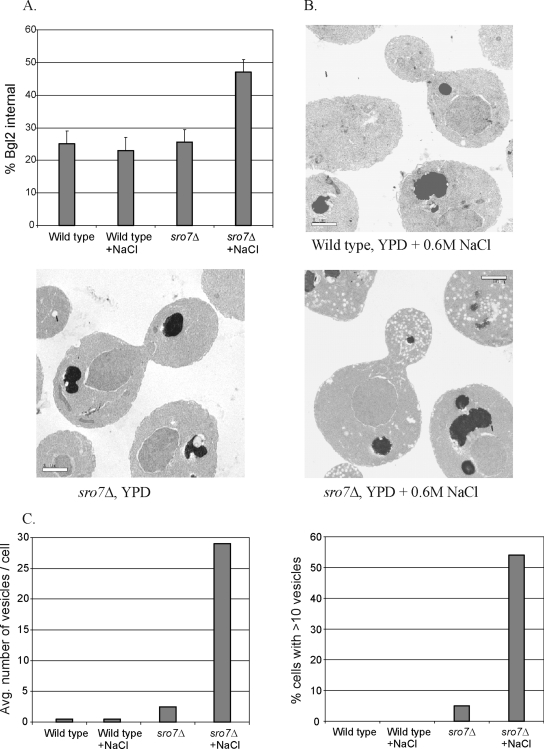Figure 7.
The sro7Δ mutant exhibits secretion defects and accumulation of post-Golgi vesicles at high salinity. (A). Secretion of Bgl2p. Assays were performed on isogenic wild-type and sro7Δ stains after a 2-h shift to YP medium with 0.6 M NaCl (+NaCl) or YP medium without added NaCl. The results show the internal accumulation of Bgl2p as a percentage of the total Bgl2 in the cell. (B) Electron microscopy of cells from WT and sro7Δ strains after a 2-h shift to YP medium with 0.6 M NaCl show that sro7Δ mutant cells accumulate 80–100-nm post-Golgi vesicles in the bud. This accumulation depends on the addition of salt, because no vesicles accumulate in sro7Δ cells in the absence of a salt stress. (C) Quantitation of the secretory vesicle accumulation in sro7Δ cells after a 2-h shift to 0.6 M NaCl/YP. Cells were scored for severity and penetrance of the secretory defects. The bar graph on the left shows the accumulation of vesicles in the indicated strains, expressed as vesicles per cell, and was determined by the number of 80–100-nm vesicles observed per cell per thin section. The graph on the right shows the penetrance of the vesicle accumulation expressed as the number of cells containing more than 10 vesicles per cell. A minimum of 100 cells were used for the quantitation of each strain.

